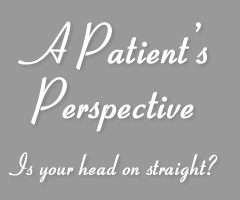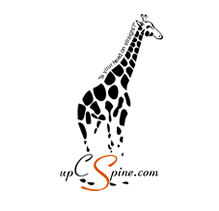| Date |
12-jul-2003 |
| Case Title |
Upper Cervical Care-9y.o. male with Tourette syndrome, ADHD, Depression, Asthma, Insomnia,headaches |
| Author |
Erin Elster, D.C. |
| Main Condition/ Disease |
Tourette syndrome, ADHD,depression,asthma, insomina,headaches |
| Source |
J. Vertebral Subluxation Res.; July 12, 2003 |
| Abstract |
This case is about a 9 y.o. boy suffering from Tourette syndrome, ADHD, depression, asthma, insomnia and headaches. He was born via forceps delivery and was taking various medications. Examination revealed evidence of an upper cervical subluxation and he was treated with an upper cervical chiropractic technique (IUCCA). After 6 weeks of care all six (6) conditions were absent and all medications except a small amount of one were discontinued. Five months post all symptoms remain absent.
Elster suggests a link between the patient's traumatic birth, the upper cervical subluxation, and his neurological condition. Further research is suggested. |
| Summary |
The author starts with an introduction discussing the history of upper cervical chiropractic care (Palmer) and documented positive results of improvements and/or elimination of symptoms in hundreds of patients with upper cervical subluxations. Whilst general (non-specific spinal manipulative therapy) chiropractic studies have shown varied results in treating asthma, headaches and ADHD some recent upper cervical studies have been overwhelmingly positive.
This case study of a 9 y.o. boy who was delivered at birth with forceps and suffered bruising, documents a very poor medical history from a young age, including wheezing, pneumonia, chronic ear infections, frequent tonsillitis, weak immune system, asthma, migraine headaches and sensitivity to lights, facial and hand contortions, problems with hand writing, tics involving his eyes, neck, voice, tongue and limbs. A neurologist evaluated the boy and following analysis was diagnosed additionally with Tourette syndrome and ADHD. An extensive drug treatment regime was implemented resulting in minimal improvements to the boy's condition.
Following the IUCCA upper cervical protocol using thermography and a series of precision upper cervical radiographic x-rays (four views), the author determined a 'left laterality of the atlas (C1) vertebra' existed in the boy's upper cervical spine.
The author administered an upper cervical chiropractic adjustment to correct the left laterality of the boy's atlas using the knee-chest adjustment technique and using the 'left posterior arch of atlas as the contact point'.
Two days after the adjustment reduction in tics was 50% and the boy had not complained of headches, neck pain or wheezing. Three weeks after the first adjustment it was reported that all motor tics were absent. There were some occasional verbal tics. Six weeks after the adjustment it was reported a complete absence of tics, asthma, insomnia, hyperactivity, headaches, depression and neck pain. Five months later the patient remained asymptomatic. All family members remarked that he had become a completely different, happy, and healthy child. One year after the adjustment he showed no signs of an upper cervical subluxation and 7 months after this no asthma attacks, headaches, neck pain, behavioral trouble or tics had occurred. The author concludes that all six original conditions were absent following 6 weeks of upper cervical care and remained absent 5 months after conclusion of the care. Elster recommends a further, extensive study be initiated. |
| References |
|
| Keywords |
Tourette syndrome, asthma, headaches, depression, ADHD, insomnia; upper cervical |
|





